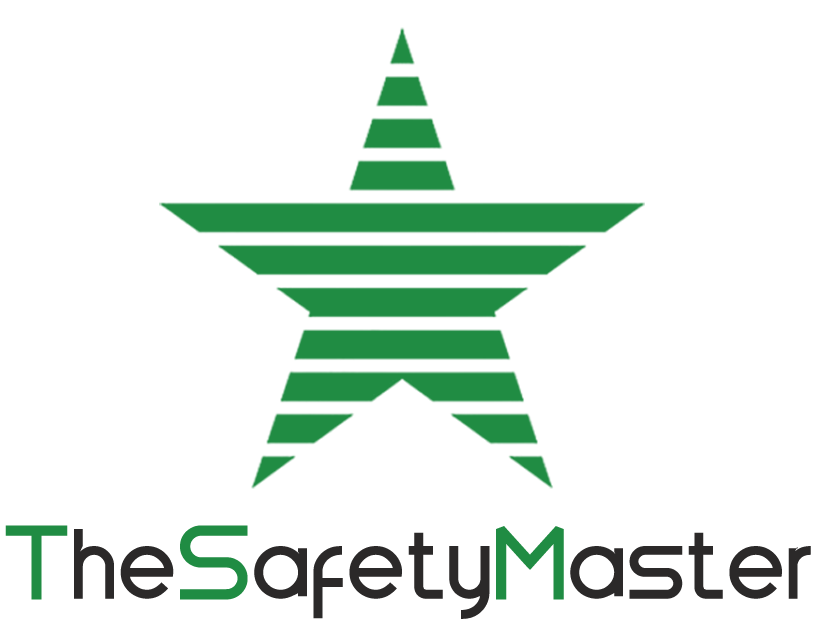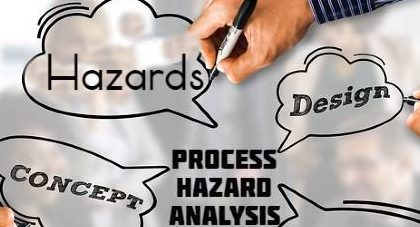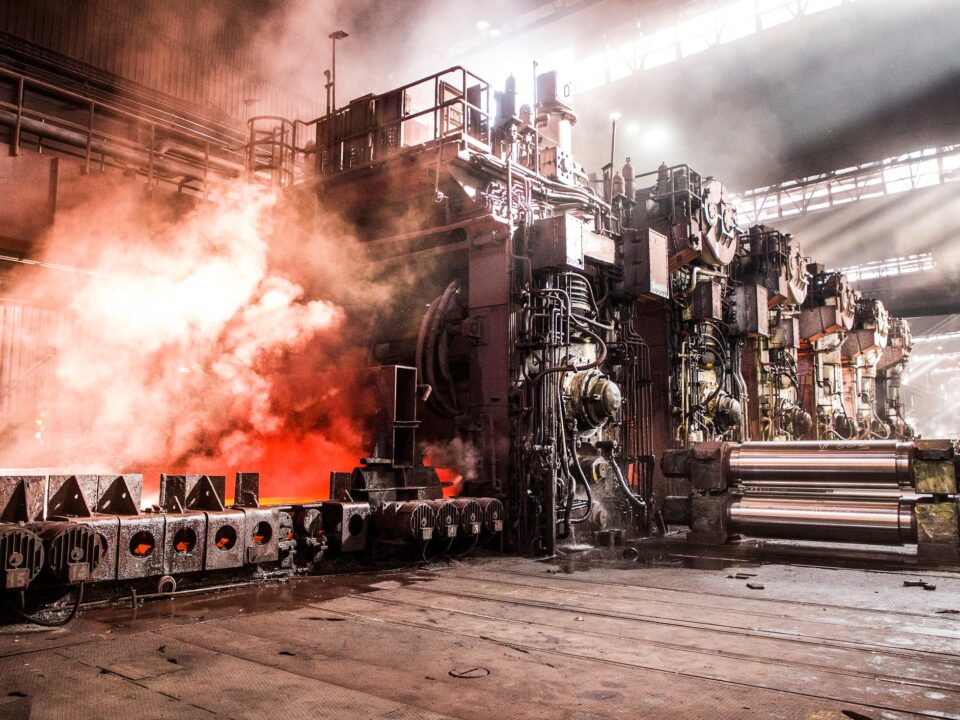HIRA & Risk Assessment Best Practices for Punjab-Based Food-Processing Plants

Process Safety Audits in Vadodara and Ahmedabad – What Every Factory Must Know
November 8, 2025
Building a Safety Culture in Punjab Manufacturing Sites: A 12-Month Roadmap
November 11, 2025Understanding HIRA and Its Importance in the Food-Processing Industry
Food-processing plants in Punjab have evolved into complex operations involving machinery, chemicals, refrigeration systems, and packaging units. These facilities not only handle perishable goods but also operate under stringent hygiene and safety regulations. In this context, Hazard Identification and Risk Assessment (HIRA) becomes a critical process. HIRA systematically identifies potential hazards in plant operations, evaluates the likelihood and severity of risks, and establishes control measures to prevent incidents that could harm people, equipment, or the environment.
The primary objective of HIRA is to create a proactive safety culture that prevents accidents before they happen. Instead of waiting for an incident to reveal system weaknesses, HIRA anticipates risks through structured analysis, ensuring compliance with international standards like ISO 45001 and FSSC 22000, which are crucial for the credibility of Punjab’s food-processing export units.
Key Hazards in Food-Processing Plants
Before establishing a HIRA framework, it’s essential to recognize the typical hazards present in such plants. These can be categorized as follows:
- Mechanical Hazards: Contact with moving parts, conveyors, mixers, and slicers can cause severe injuries if guards or interlocks are missing.
- Thermal Hazards: Boilers, ovens, and hot surfaces create a risk of burns and scalding.
- Chemical Hazards: Cleaning agents, refrigerants like ammonia, and sanitizing solutions pose inhalation or skin contact risks.
- Electrical Hazards: Moist environments and faulty wiring increase the likelihood of shocks and short circuits.
- Ergonomic Hazards: Repetitive work and awkward postures can lead to musculoskeletal disorders.
- Biological Hazards: Bacterial contamination or exposure to allergens can compromise worker health and product safety.
- Fire and Explosion Hazards: The presence of combustible dust, packaging materials, and flammable gases necessitates strict adherence to a periodic Fire Audit.
Each of these hazards demands a methodical assessment and control strategy through the HIRA framework.
The HIRA Methodology – Step by Step
A robust HIRA process for food-processing plants typically involves the following steps:
1. Planning and Scope Definition
Identify all plant activities—production, maintenance, cleaning, storage, and transportation. Define the boundaries of assessment, covering routine and non-routine operations such as equipment maintenance, shutdowns, and start-ups.
2. Hazard Identification
Use multiple techniques like brainstorming sessions, equipment walkthroughs, and review of incident records. Operators, maintenance personnel, and supervisors should actively participate since they possess firsthand knowledge of day-to-day risks.
3. Risk Analysis and Evaluation
Determine the probability and severity of each identified hazard using a risk matrix. The analysis should classify risks as low, medium, or high to prioritize control actions. For instance, a potential ammonia leak in a refrigeration unit is a high-risk event requiring immediate preventive action.
4. Risk Control and Mitigation
Implement control measures following the hierarchy of controls: elimination, substitution, engineering controls, administrative controls, and personal protective equipment (PPE). For example, replacing hazardous cleaning chemicals with non-toxic alternatives (substitution) or installing automatic shut-off valves (engineering control).
5. Documentation and Communication
Record every step, including hazard details, risk scores, and implemented controls. Communication is key—employees must understand why specific controls exist and how to apply them consistently.
6. Review and Continuous Improvement
HIRA is not a one-time exercise. Regular reviews should be conducted after plant expansions, machinery upgrades, or incidents. This ensures that the assessment stays current and relevant to evolving risks.
Integration with Advanced Risk Studies and Audits
To build a world-class safety management system, HIRA should integrate with other specialized assessments such as the Hazop Study. A HAZOP (Hazard and Operability) study dives deeper into process deviations by analyzing “what-if” scenarios—especially useful for plants handling complex mixing, heating, or refrigeration systems. Combining HIRA with HAZOP provides a comprehensive overview of both operational and process-related risks.
Additionally, a periodic Safety Audit ensures that the plant’s safety management system aligns with statutory requirements under the Factories Act and Food Safety and Standards Regulations. These audits evaluate the effectiveness of implemented HIRA findings, emergency preparedness, and fire safety measures.
Best Practices for Effective HIRA Implementation in Food-Processing Plants
1. Develop a Cross-Functional Safety Team
The most successful HIRA programs involve collaboration between production engineers, maintenance teams, HR personnel, and quality control experts. A cross-functional team ensures all potential hazards—mechanical, electrical, and biological—are addressed comprehensively.
2. Train Employees Regularly
Training must go beyond classroom sessions. Practical demonstrations, mock drills, and toolbox talks reinforce safe work behavior. Workers should understand how to recognize early signs of equipment malfunction or unsafe conditions.
3. Leverage Technology for Risk Monitoring
Use IoT-enabled temperature sensors, gas detectors, and data analytics to monitor hazards in real time. These tools help predict potential risks—such as overheating ovens or ammonia leaks—before they escalate into accidents.
4. Integrate HIRA with Process Safety Management
Process Safety Management (PSM) provides a framework to control hazards associated with chemical and process operations. Integrating HIRA with PSM ensures that safety measures are embedded into every stage of food production, from raw material handling to packaging. It emphasizes preventive maintenance, emergency response, and change management protocols.
5. Adopt Behavior-Based Safety (BBS) Programs
Human error remains one of the top causes of workplace accidents. Implementing BBS programs helps identify unsafe behaviors, promotes accountability, and reinforces positive safety habits. Supervisors should monitor compliance and reward teams for following safe work procedures.
6. Maintain Fire and Explosion Readiness
Conduct regular Fire Audit inspections to ensure that extinguishers, hydrant systems, and smoke detectors are functional. In food-processing plants, dust accumulation from flour or sugar can become combustible—necessitating dust extraction systems and proper housekeeping.
7. Use PPE Effectively and Maintain Hygiene Protocols
Personal protective equipment such as gloves, masks, and goggles should be appropriate for the specific hazards of each workstation. Hygiene is equally critical; cross-contamination between food and chemical areas must be strictly controlled.
8. Emergency Preparedness and Drills
A comprehensive emergency plan must cover fire, gas leak, equipment failure, and medical emergencies. Conducting mock drills at least twice a year builds readiness and ensures that employees know evacuation routes and communication protocols.
Common Mistakes to Avoid in HIRA Implementation
- Treating HIRA as a compliance formality: Many plants prepare documents only for audits without real implementation.
- Neglecting contractor safety: External vendors often work in high-risk zones but are excluded from HIRA participation.
- Failure to update assessments: Equipment upgrades, process changes, or new chemicals demand immediate reassessment.
- Ignoring near-miss incidents: Every near miss should be treated as a learning opportunity to refine control measures.
- Over-reliance on PPE: While PPE is essential, it should never replace engineering or administrative controls.
Role of a Safety Consultant
Engaging a professional Safety Consultant can significantly enhance the effectiveness of HIRA and risk assessments. Experts bring an external perspective, identify blind spots, and benchmark your plant’s safety performance against national and global standards. A consultant’s role includes:
- Conducting baseline hazard assessments and compliance gap analysis.
- Guiding management in developing Standard Operating Procedures (SOPs).
- Providing training on emergency response and chemical handling.
- Assisting in integrating HIRA with Quality, Environment, and Occupational Health systems.
- Supporting documentation for ISO certifications and client audits.
For food-processing plants in Punjab—where seasonal fluctuations, workforce diversity, and rapid mechanization are common—a qualified consultant ensures that safety systems evolve with operational growth.
Compliance and Legal Obligations
Punjab’s food-processing plants must comply with several key legislations:
- Factories Act, 1948 – mandates risk assessments, periodic safety training, and medical examinations.
- Food Safety and Standards Act, 2006 – ensures hygienic food handling and safe working environments.
- National Building Code and Fire Safety Regulations – stipulate fire prevention measures and emergency exits.
- Occupational Safety, Health, and Working Conditions Code, 2020 – consolidates safety standards for modern industries.
Non-compliance not only risks legal penalties but also threatens business continuity, especially for export-oriented units subject to third-party audits.
Case Example: Improving Safety in a Punjab Dairy Plant
A dairy plant in Ludhiana faced frequent minor ammonia leaks due to aging refrigeration systems. A structured HIRA, integrated with a Hazop Study, revealed inadequate valve maintenance and lack of sensor redundancy. The plant implemented engineering controls, upgraded monitoring systems, and trained staff in emergency response. Within six months, the frequency of leaks dropped to zero, and the facility passed its Safety Audit with commendations from local inspectors. This case highlights how structured risk assessment delivers tangible safety and operational benefits.
Building a Sustainable Safety Culture
The final goal of any HIRA and risk assessment program is not just compliance—it’s cultural transformation. Every worker, supervisor, and manager should view safety as a shared responsibility. Encouraging open reporting, celebrating safety milestones, and integrating risk awareness into daily routines make safety part of the organizational DNA.
Regular training, leadership involvement, and transparent communication reinforce this culture. Over time, plants that prioritize safety witness fewer accidents, higher productivity, and improved employee morale.
Conclusion
For Punjab’s fast-growing food-processing industry, HIRA and risk assessment aren’t optional—they’re essential tools for operational excellence and sustainability. By combining structured methodologies like HIRA and Process Safety Management with expert guidance from a professional Safety Consultant, plants can ensure compliance, safeguard workers, and protect brand reputation.
In a sector where safety directly impacts food quality and public trust, proactive risk management isn’t just about avoiding accidents—it’s about securing the future of Punjab’s food industry.



